
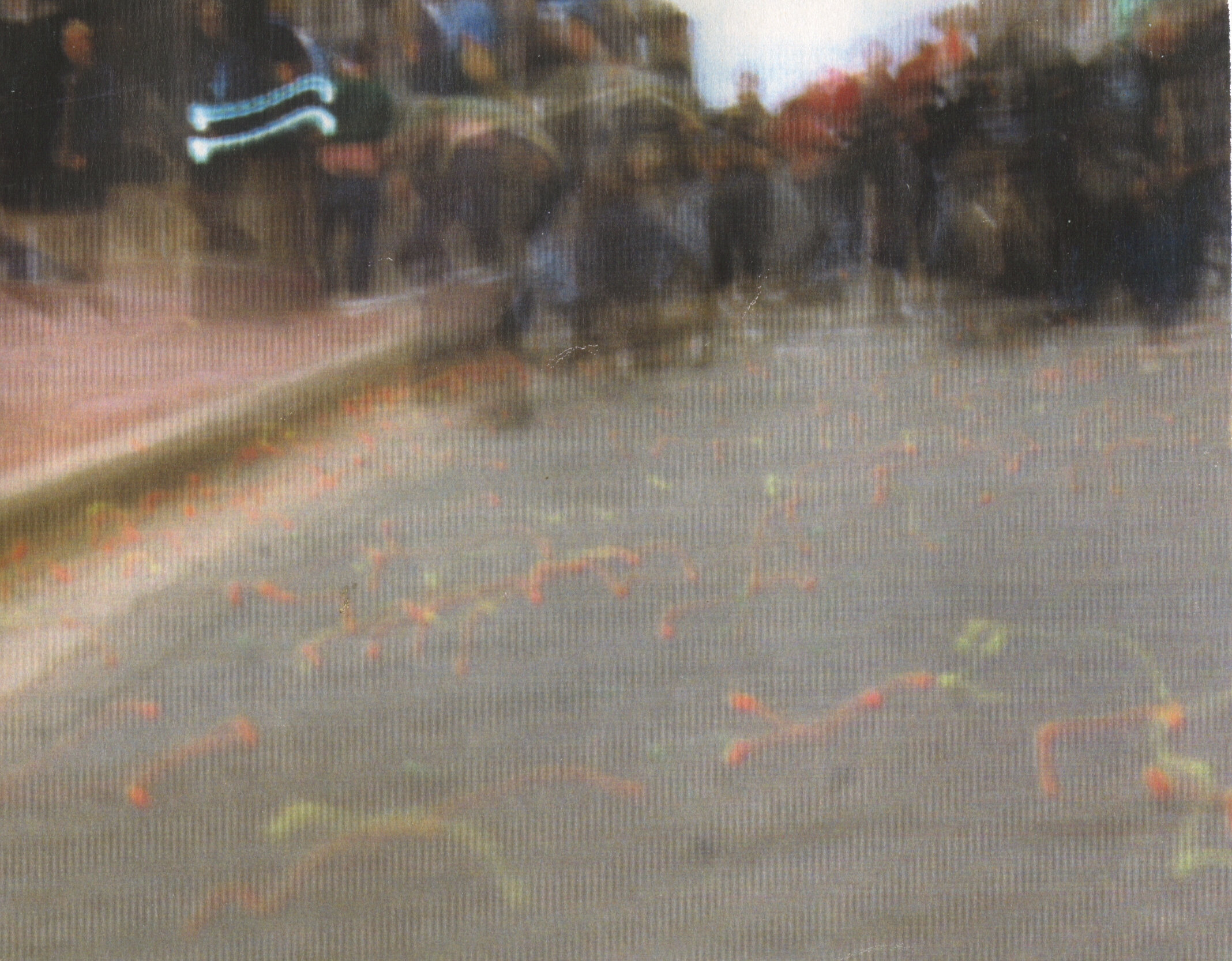


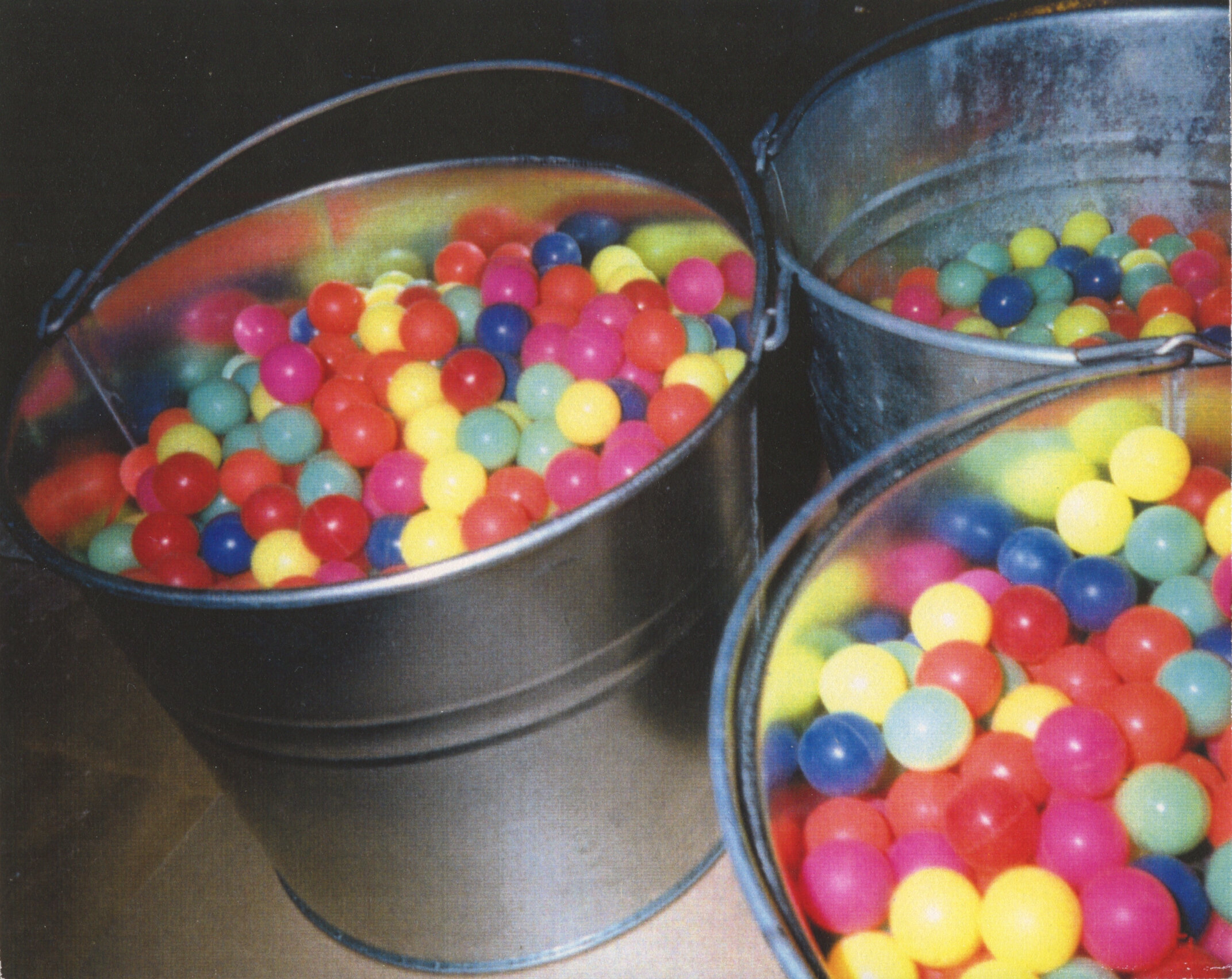

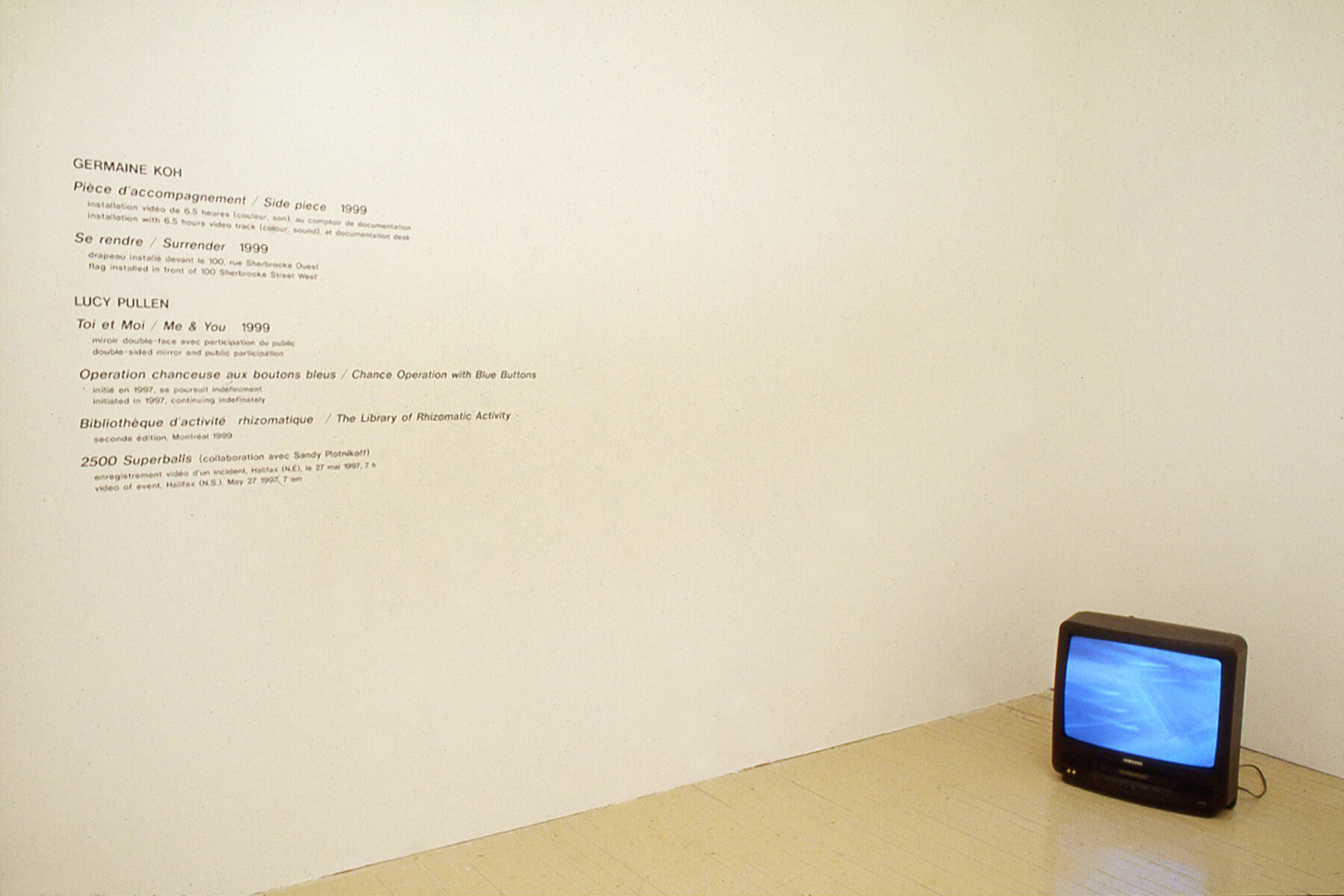
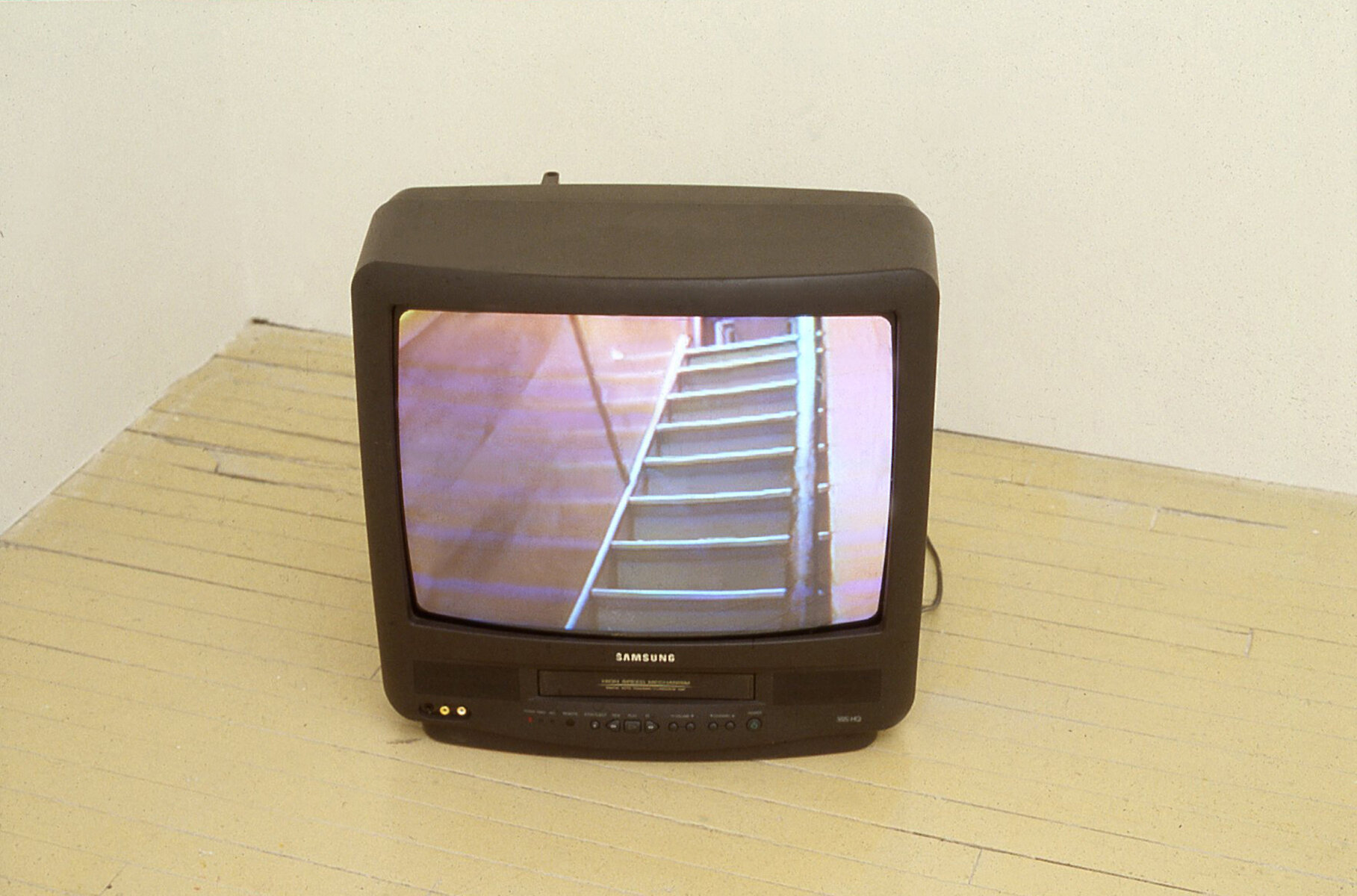
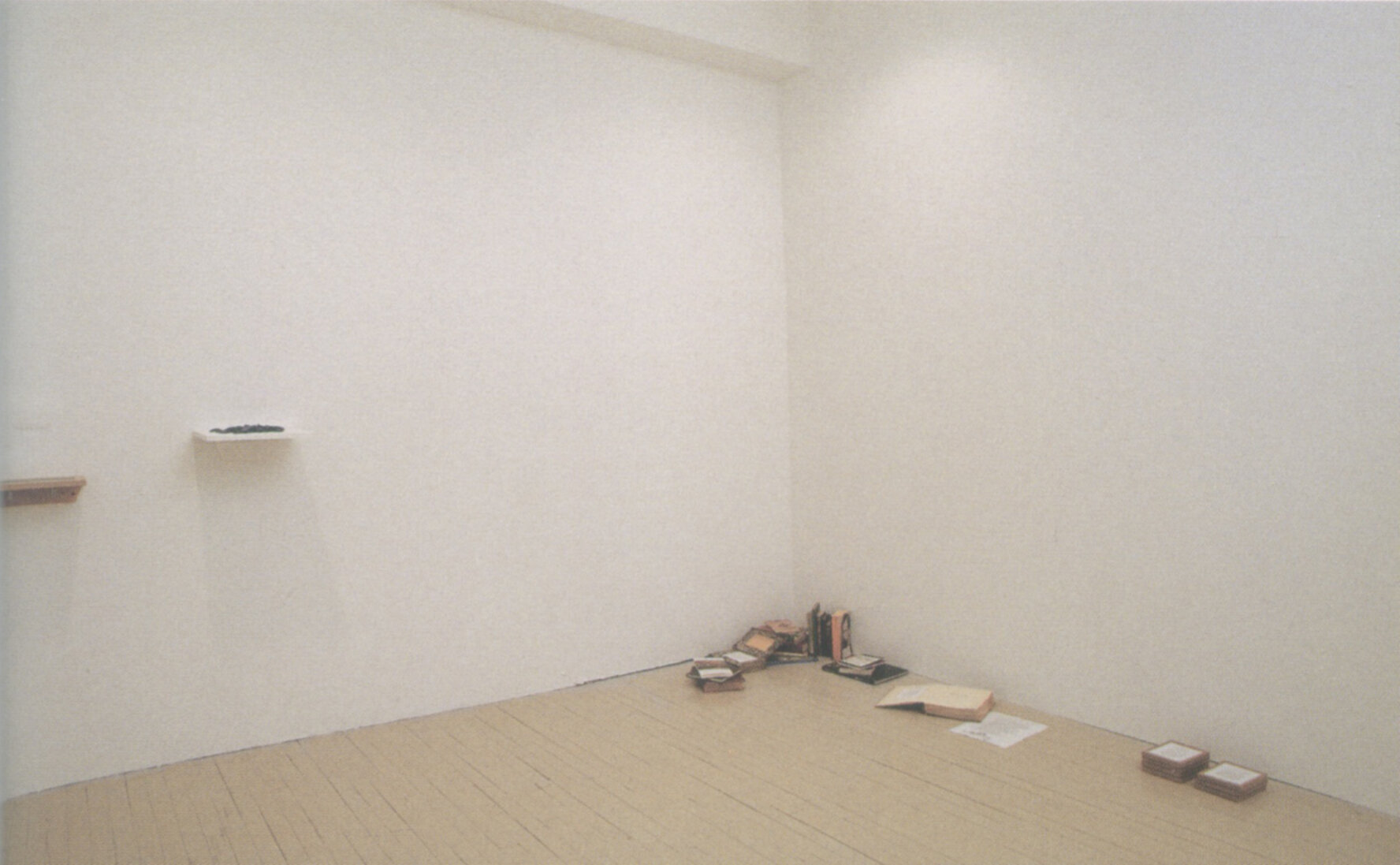
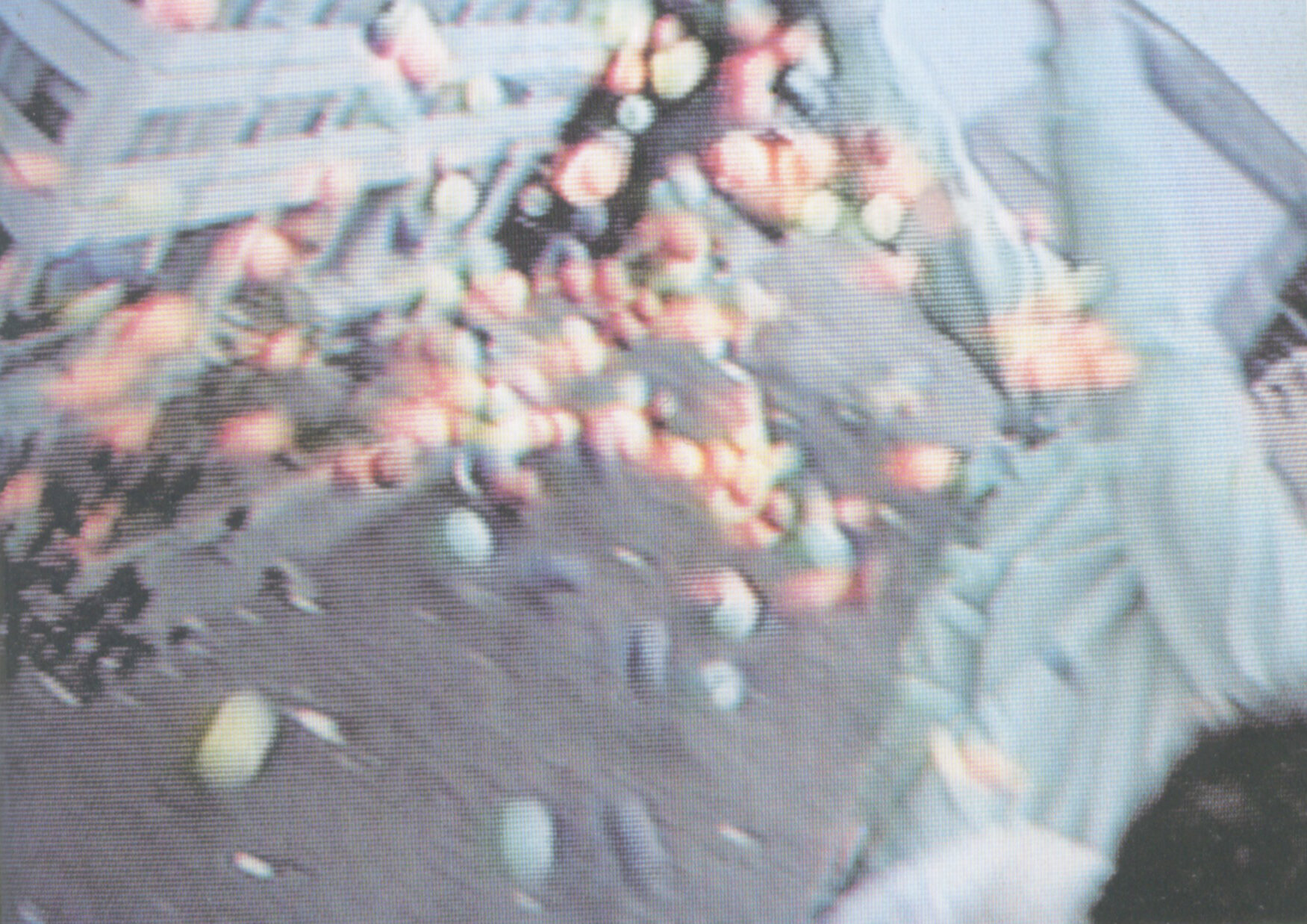
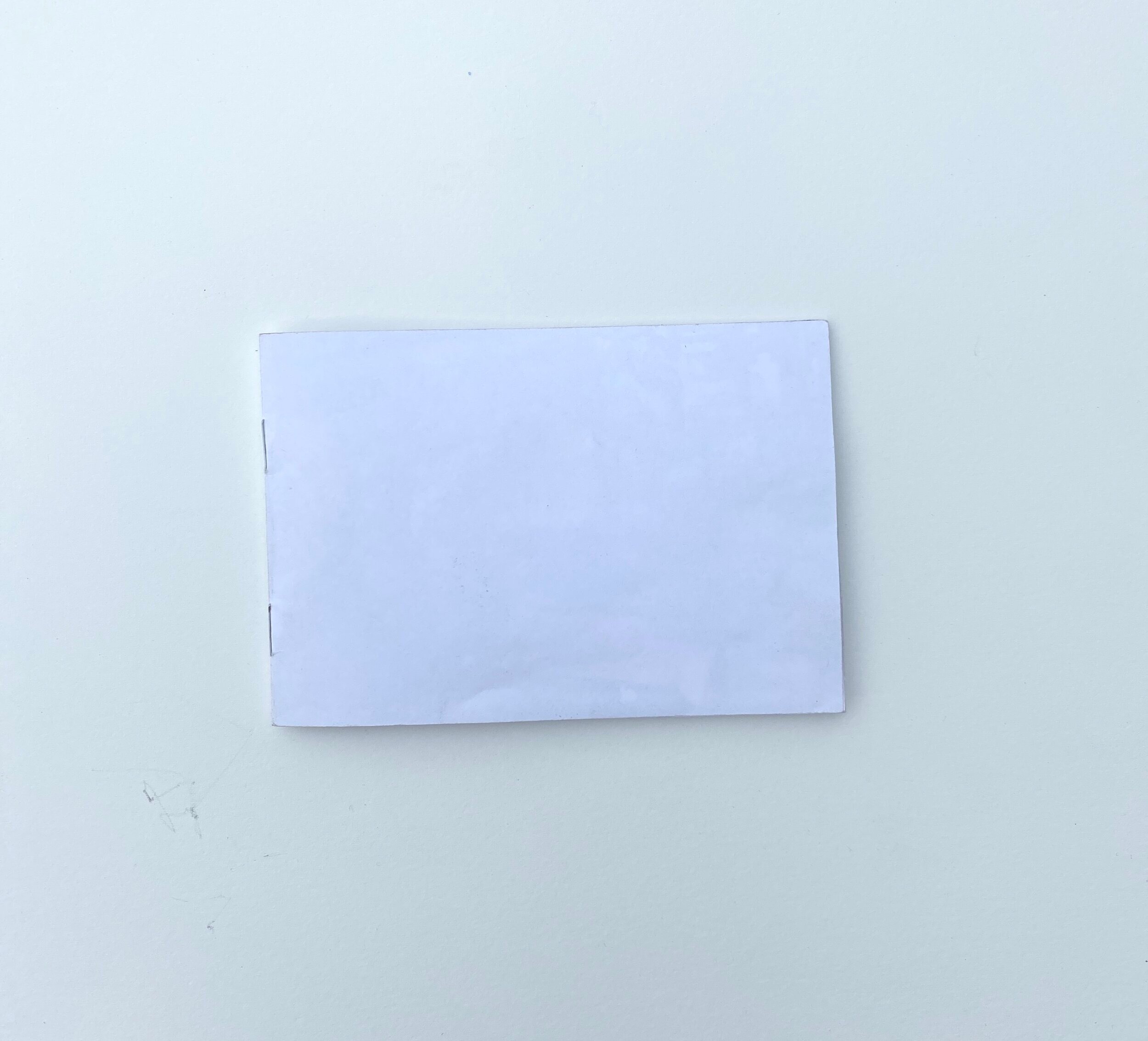







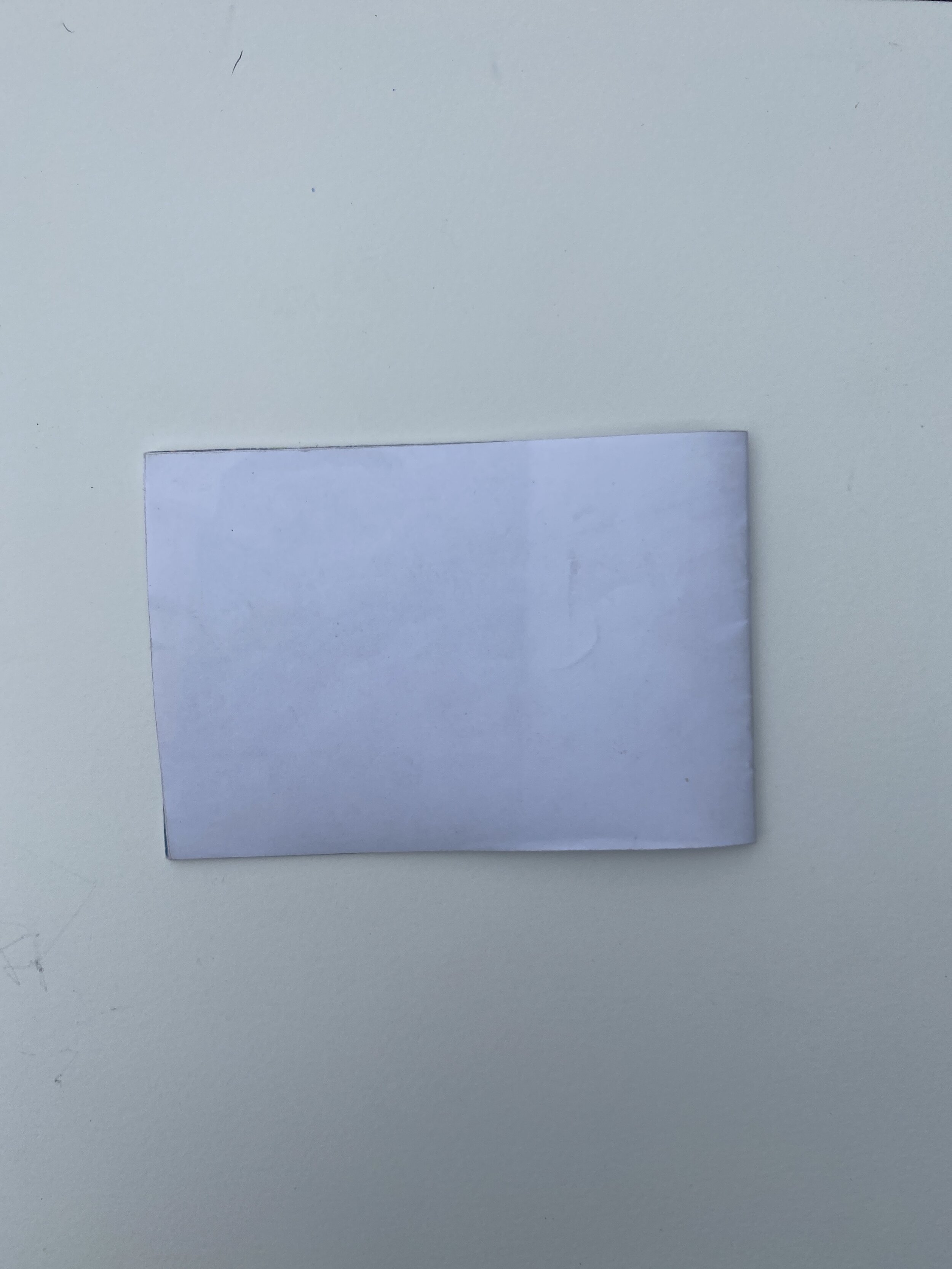

street view, 2500 SUPERBALLS, 1997 (collaboration: Sandy Plotnikoff; photo: David Christensen; review: Graham Long, ‘It Takes Balls’, The Coast)
It was years in the planning, but it only took about ten seconds for 2,500 little rubber balls to hit the ground, bounce, and ... well … hit the ground again.

street view, 2500 SUPERBALLS, 1997 (collaboration: Sandy Plotnikoff; photo: Victoria Kent, review: Graham Long, “It Takes Balls, The Coast)
Lucy Pullen and Sandy Plotnikoff dropped the multi-coloured balls from the roof of the five storey parking lot on the corner of Sackville and Granville Streets in Downtown Halifax at 7am on Sunday. ‘It’s nice to do stuff like this in public,’ says Pullen. ‘It’s a spectacle. It made a lot of people really happy.’

street view, 2500 SUPERBALLS, 1997 (collaboration: Sandy Plotnikoff; photo: Victoria Kent, review: Graham Long, "It Takes Balls", The Coast)
About 60 people withessed the event which Pullen and Plotnikoff publicized with posters and by word of mouth. Included in the crowd were a group returning from a rave were, Pullen says, ‘just blown away.’

studio view, 2500 SUPERBALLS, 1997 (collaboration: Sandy Plotnikoff; photo: Rebecca Kraatz, review: Graham Long, “It Takes Balls”, The Coast)
Pullen and Plotnikoff started talking about the idea in 1994. They have been collecting balls since then, buying them mainly from machines outside grocery stores. To round the numbers up to 2,500 for the big drop they spent $150 on a bulk shipment from a company in Dartmouth. After they stopped bouncing, the balls were left on the street where they were picked up by passers-by.

studio view, 2500 SUPERBALLS, 1997 (collaboration: Sandy Plotnikoff; photo: Rebecca Kraatz; review: Graham Long)
‘We thought of it as a generous thing to do,’ says Pullen, adding that the balls were all picked up and the artists may well try something similar in the future. The ball drop was recorded on video and will be shown on cable TV - but only in Sackville, New Brunswick.

street view, 2500 SUPERBALLS, 1997, HALIFAX CANADA (collaboration: Sandy Plotnikoff; photo: Micha Donovan)
Documentation includes an artist book designed by Sandy Plotnikoff and a video shot by Rafael Tsuchida and edited with David Chark that, through Art Metropole are in the collection of the Library & Archives, National Gallery of Canada, Ottawa. Completed: 1997

installation view, FIN DE SIECLE, Optica, Montreal, 1999 (collaboration: Sandy Plotnikoff; review, Marcus Miller, “A Conceptual Fin De Siecle”, Montreal Gazette, 12/1999)
I'm trying to express my incredulity at the kind of work it's possible to produce (again) nowadays. I'm becoming quite theatrical and my hands are flailing about, I tell the curator pseudo-hysterically. she corrects me, ‘Its only the surface of conceptualism’. Smart answer. But does it have any depth? Germaine Koh and Lucy Pullen are paired in the multidisciplinary room for the last of Optica's turn-of-the-millenium series, 1000 Gracias, curated by Francois Dion and Luis Jacob (they will publish a catalogue next spring). Over the past few years, both artists have developed bodies of work that draw heavily on strategies of conceptualism. Pullen even graduated from one of the original centres of conceptual art, the Nova Scotia College of Art and Design in Halifax. In Surrender, Koh has mounted a white flag at the entrance that stands in for, and duplicates another white flag installed on the street at 100 Sherbrooke St E. Side Piece, her other contribution to the show, is a 6 1/2, hour, real time, single-shot take of a park bench in Paris frequented by homeless people. Setting up surrogate links, and revealing or establishing alternate networks of relations is an old conceptualist tactic, and in this regard some of Pullen's pieces are typical.

installation view, FIN DE SIECLE, Optica, Montreal, 1999 (collaboration: Sandy Plotnikoff; review, Marcus Miller, “A Conceptual Fin De Siecle”, Montreal Gazette, 12/1999)
These different networks and structures recall other artistic strategies that were contemporary with the first wave of conceptualism. The resolutely unproductive situationist technique of aimlessly wandering was used as an antidote to the goal-oriented, linearity of capitalist life. Here the explicitly political motive isn't quite so clear. However the recourse to absurdity and social relations roots this work firmly in the opposition's camp. Even if we accept the neatly complete collapse of history, and agree that is a word we should eject from our critical vocabularies, some of this stuff just seems to sit there. One piece with a fresh fuck-you attitude is a straight-ahead video document entitled 2500 Superballs. Two people climb the stairs to the roof of a downtown high-rise and dump buckets of Superballs down to the street below.

installation view, FIN DE SIECLE, Optica, Montreal, 1999 (review, Marcus Miller, “A Conceptual Fin De Siecle”, Montreal Gazette, 12/1999)
The Library of Rhizomatic Activity is an idiosyncratic collection of books that come together by virtue of a bookplate sticker the artist has produced (a little boxed set can be purchased at the gallery). Not housed in any one building, or restricted to any particular subject, discipline or language, this library's structure is personal and anachronistic. According to my dictionary, is Greek for causing to take root, and Pullen seems interested in planting the seeds for open networks of unforeseen relations. In Chance Operations with Blue Buttons, you are asked to take one of the small blue buttons the artist has placed on a shelf and are asked to circulate.

video still, 2500 SUPERBALLS, 1997 (collaboration: Sandy Plotnikoff; review, Marcus Miller, “A Conceptual Fin De Siecle”, Montreal Gazette, 12/1999)
Even though the prank is carried out at 7 am, its still dangerous, irresponsible, wasteful, juvenile, pointless and probably destructive but ohhhh what a feeling. From where I'm sitting, 2500 Superballs digs past the surface and gives a glimpse, however brief and illusory, of pure freedom.
Marcus Miller, Dec 14, 1999, Montreal PQ Canada

2500 Superballs, 1997 (artist book, design: Sandy Plotnikoff; 4.25 X 5.5 inches, (10.4 x 13.9 cm), 16 pages, colour photocopy, stapled)

PAGE 2, 2500 Superballs, 1998 (artist book, design: Sandy Plotnikoff; 4.25 X 5.5 inches, (10.4 x 13.9 cm), 16 pages, colour photocopy, stapled)

2500 Superballs, 1997 (artist book, design: Sandy Plotnikoff; 4.25 X 5.5 inches, (10.4 x 13.9 cm), 16 pages, colour photocopy, stapled)

2500 Superballs, 1997 (artist book, design: Sandy Plotnikoff; 4.25 X 5.5 inches, (10.4 x 13.9 cm), 16 pages, colour photocopy, stapled)

2500 Superballs, 1997 (artist book, design: Sandy Plotnikoff; 4.25 X 5.5 inches, (10.4 x 13.9 cm), 16 pages, colour photocopy, stapled)

2500 Superballs, 1997 (artist book, design: Sandy Plotnikoff; 4.25 X 5.5 inches, (10.4 x 13.9 cm), 16 pages, colour photocopy, stapled)

2500 Superballs, 1997 (artist book, design: Sandy Plotnikoff; 4.25 X 5.5 inches, (10.4 x 13.9 cm), 16 pages, colour photocopy, stapled)

2500 Superballs, 1997 (artist book, design: Sandy Plotnikoff; 4.25 X 5.5 inches, (10.4 x 13.9 cm), 16 pages, colour photocopy, stapled)

2500 Superballs, 1997 (artist book, design: Sandy Plotnikoff; 4.25 X 5.5 inches, (10.4 x 13.9 cm), 16 pages, colour photocopy, stapled)